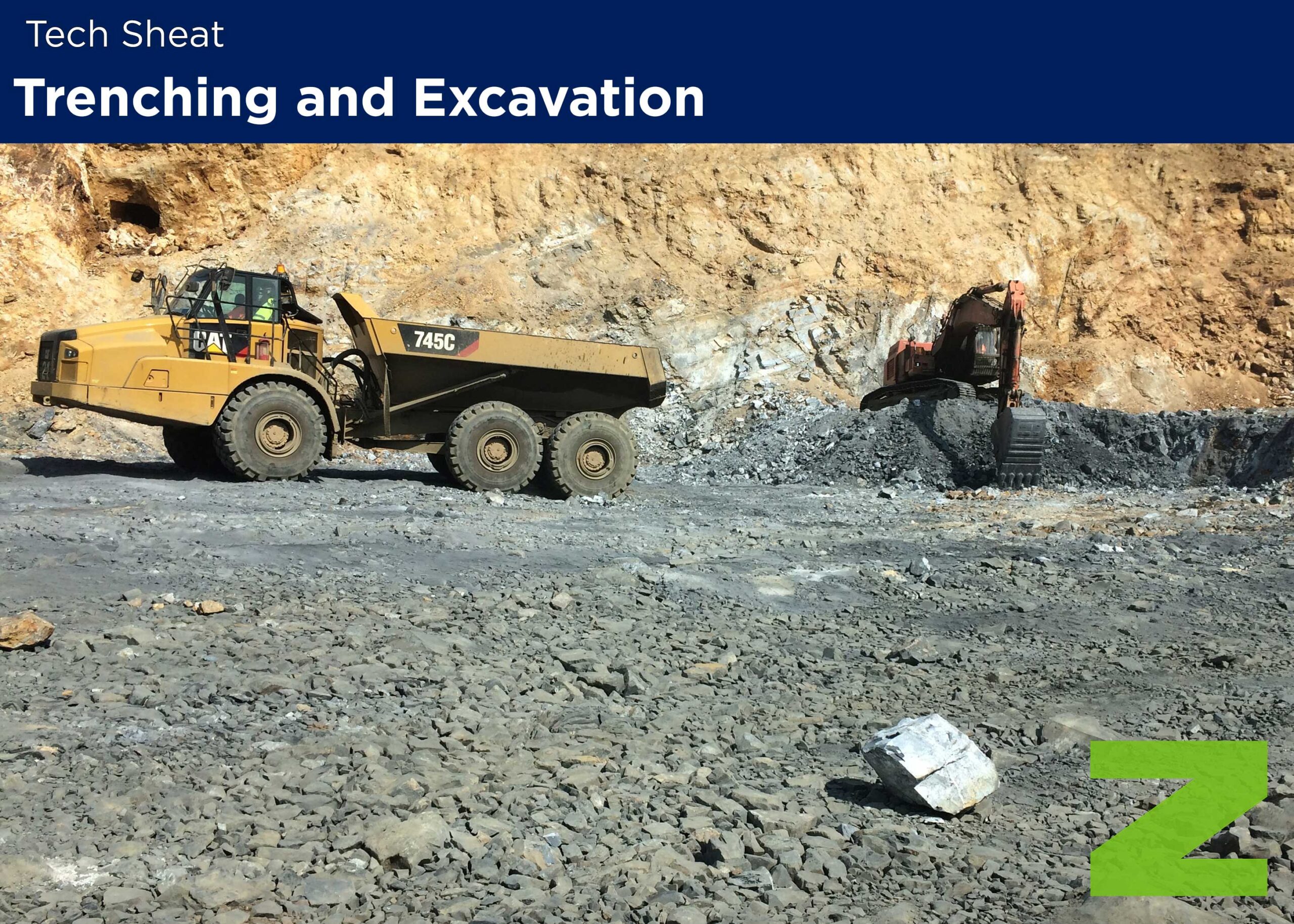Excavation cave-ins cause serious and often fatal injuries to workers in the United States. Excavating is recognized as one of the most hazardous construction operations, killing an average of 33 people and injuring hundreds each year. Recently, the Occupational Safety & Health Administration (OSHA) updated its standard to simplify many of the existing provisions, to add and clarify definitions, to eliminate duplicate provisions and ambiguous language and to give employers added flexibility in providing protection for employees. The following information summarizes these changes.
General Requirements
Planning for Safety—Contractors should develop safety checklists before preparing a bid to make certain there is adequate information about the job site and all needed equipment is on hand. The checklists should incorporate elements of the relevant OSHA standards as well as other information necessary for safe operations. These specific site conditions should be considered:
- Traffic
- Nearness of structures and their conditions
- Soil
- Surface and groundwater
- Water table
- Overhead and underground utilities
- Weather
On-the-job Evaluation—The authority to correct hazardous trenching/excavating situations should be clearly communicated and enforced. The OSHA standard requires that a competent person inspect, on a daily basis, excavations and the adjacent areas for possible cave-ins, failures of protective systems and equipment and hazardous atmospheres or conditions. If these conditions are encountered, exposed employees must be removed from the hazardous area until the necessary safety precautions have been taken.
Protective Support Systems
Support Systems—OSHA requires that, in all excavations, employees exposed to potential cave-ins are protected by sloping or benching the sides of the excavation, by supporting the sides of the excavation or by placing a shield between the side of the excavation and the work area. Designing a protective system can be complex because of the number of factors involved—soil classification, depth of cut, water content of soil, changes due to weather and climate or other operations in the vicinity. The OSHA standard provides several different methods and approaches for designing protective systems that can provide the required level of protection against cave-ins. At least one copy of the information, including the identity of the registered professional engineer who approved the data, must be kept at the worksite during construction of the protective system.
Installation and Removal of Protective Systems— The OSHA standard requires the following procedures for the protection of employees when installing support systems:
- Securely connect members of support systems
- Safely install support systems
- Never overload members of support systems
- Install other structural members to carry loads imposed on the support system when temporary removal of individual members is necessary
As soon as work is completed, the excavation should be back-filled as the protective system is dismantled. After the excavation has been cleared, workers should slowly remove the protective system from the bottom up, taking care to release members slowly.
Other Hazards
Falls and Equipment—In addition to cave-in hazards and secondary hazards related to cave-ins, there are other dangers for workers during excavation-related work. These include exposure to falls, falling loads and mobile equipment. To protect employees, OSHA requires the employer to take the following precautions:
- Keep materials or equipment that might fall or roll into an excavation at least 2 feet from the edge, have retaining devices or both.
- Provide warning systems such as mobile equipment, barricades, hand or mechanical signals or stop logs to alert operators of the edge of an excavation.
- Prohibit employees from working on faces of sloped or benched excavations at levels above other employees.
- Prohibit employees from working under loads that are handled by lifting or digging equipment.
Water Accumulation—The OSHA standard prohibits employees from working in excavations where water has accumulated or is accumulating unless adequate protection has been provided. If water removal equipment is used to control or prevent water from accumulating, the equipment and operations of the equipment must be monitored by a competent person to ensure proper use.
Hazardous Atmospheres—Before any employee enters an excavation greater than 4 feet in depth or where oxygen deficiency or a hazardous atmosphere exists or could reasonably be expected to exist, a competent person must perform atmospheric testing to determine if a hazardous condition exists. If hazardous conditions exist, controls, such as proper respiratory protection or ventilation, must be provided.
Access and Egress—Under the OSHA standard, the employer must provide safe access and egress to all excavations. When employees are required to be in trench excavations 4 feet deep or more, adequate means of exit, such as ladders, steps, ramps or other safe means of egress must be provided within 25 feet of lateral travel.
Trenching and excavation work presents serious risks to all workers involved. The greatest risk of primary concern is that of a cave-in. When these accidents occur, they are much more likely to result in worker fatalities than other excavation-related accidents. Strict compliance with all sections of the OSHA standard will help reduce the risk of cave-ins, as well as other excavation-related accidents.





